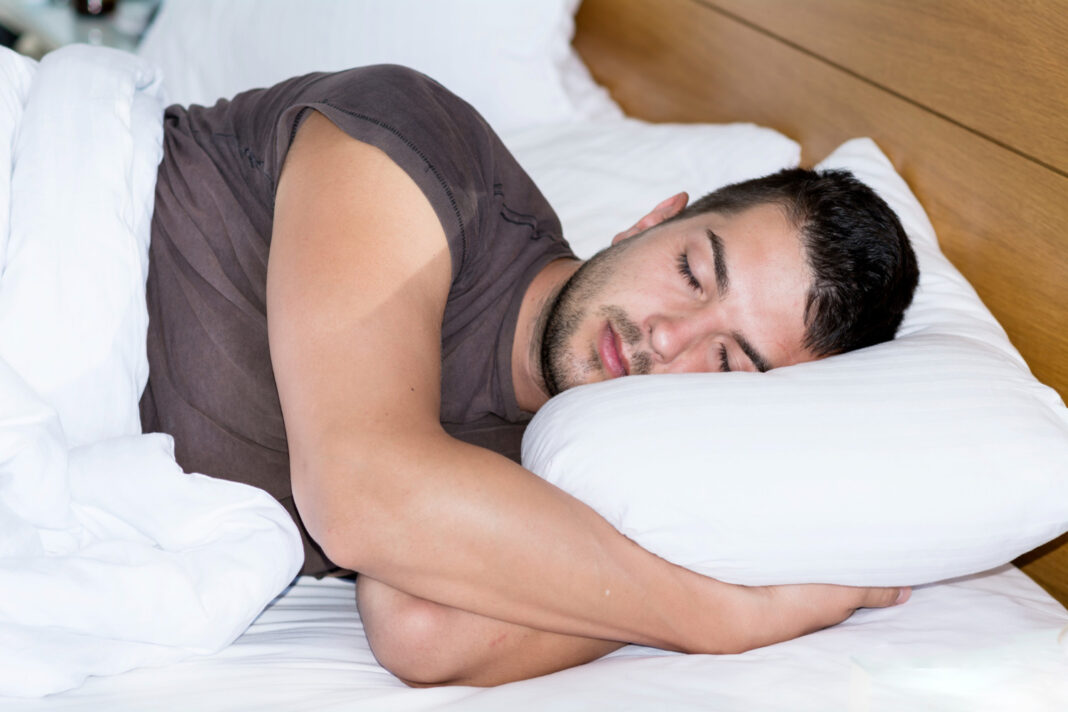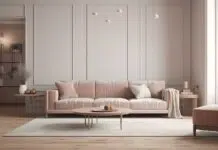Sleep disorders can significantly impact our quality of life, leaving us exhausted and frustrated.
Two common culprits behind sleepless nights are sleep apnea and restless leg syndrome (RLS). These conditions disrupt sleep patterns, which can potentially lead to more serious health issues if left untreated.
Let’s explore how new technologies can make it easier to deal with these sleep disorders.
Understanding Sleep Apnea and Restless Leg Syndrome
Before we talk about the innovative technologies, let’s briefly discuss what sleep apnea and restless leg syndrome entail.
Sleep Apnea
Sleep apnea is a disorder characterized by repeated interruptions in breathing during sleep. These pauses can last from a few seconds to minutes and may occur 30 times or more an hour.
The most common type is obstructive sleep apnea (OSA), where the airway becomes blocked or collapses during sleep.
The National Council on Aging (NCOA) estimates that about 39 million US adults suffer from obstructive sleep apnea. Worldwide, there are approximately 936 million adults with mild to severe OSA.1
Sleep apnea manifests through various symptoms. Loud snoring is often the most noticeable, frequently accompanied by gasping or choking sounds during sleep. It’s also not unusual to experience excessive daytime sleepiness, struggling to stay alert and focused throughout the day.
Morning headaches are another common complaint, as the brain doesn’t receive enough oxygen during the night.
Many people with sleep apnea report difficulty concentrating, which can impact both personal and professional life.
If left untreated, sleep apnea can lead to serious health problems. The repeated oxygen deprivation and sleep disruption can contribute to high blood pressure, increasing the risk of heart disease and stroke. It’s a condition that requires attention and proper management to prevent these potentially severe consequences.
Restless Leg Syndrome
Restless leg syndrome (RLS) is a condition characterized by an uncontrollable urge to move the legs, usually due to uncomfortable sensations. These symptoms typically occur in the evening or at night when sitting or lying down and are partially or completely relieved by movement.
RLS presents a unique set of challenges for those affected. The overwhelming urge to move the legs can be incredibly disruptive, especially when trying to relax or fall asleep. Many describe the sensations as crawling, creeping, or tingling, which can range from mildly annoying to severely uncomfortable.
The said symptoms tend to worsen in the evening or at night, precisely when most people are trying to wind down and rest. As a result, RLS often leads to significant sleep disturbances, impacting overall quality of life.
Interestingly, some studies link these two conditions2, prompting the question: “Can sleep apnea cause restless leg syndrome?” While the relationship isn’t fully understood, studies suggest that sleep apnea may exacerbate RLS symptoms in some individuals.
Innovative Technologies for Managing Sleep Apnea
Significant advancements have been made in sleep apnea management in recent years. Let’s explore some of the most promising technologies.
Smart CPAP Devices
Continuous Positive Airway Pressure (CPAP) therapy remains the gold standard for treating sleep apnea. However, traditional CPAP machines have come a long way.
Modern CPAP devices offer a range of features that enhance both effectiveness and user experience. These advanced machines can automatically adjust pressure based on real-time breathing patterns, ensuring optimal therapy throughout the night.
Many devices now come with wireless connectivity for easy data tracking and sharing with healthcare providers. This feature enables more personalized care and quicker adjustments to treatment plans.
Comfort has also been a major focus of innovation. Integrated humidifiers help prevent dry mouth and nasal passages, which were common complaints with older models.
Implantable Neurostimulation Devices
For those who struggle with CPAP therapy, implantable neurostimulation devices offer an alternative. These devices work by stimulating the hypoglossal nerve, which controls tongue movement. By keeping the tongue from blocking the airway during sleep, they effectively manage sleep apnea.
Key benefits of neurostimulation devices include:
- no mask or external equipment required
- automatic activation during sleep
- potential for better long-term compliance
While still relatively new, this technology shows promising results in clinical trials and offers hope for those who find CPAP therapy challenging.
AI-Powered Sleep Analysis
Artificial Intelligence (AI) is another solution that’s advancing sleep disorder diagnosis and management.
AI algorithms analyze sleep data from different sources, including wearable devices, smartphone apps, and home sleep tests. They detect patterns indicative of sleep apnea, allowing for earlier diagnosis and intervention.
Beyond diagnosis, AI systems can also provide personalized recommendations for improving sleep quality and managing symptoms. Analyzing large amounts of data, they identify trends and correlations that might not be immediately apparent to human observers. The information can then be used to develop more tailored treatment plans, leading to better outcomes for patients.
Moreover, AI-powered analysis can make home sleep testing more accurate and accessible. This could reduce the need for in-lab sleep studies, making diagnosis more convenient and less costly for patients.
Cutting-Edge Solutions for Restless Leg Syndrome
Restless leg syndrome (RLS) can be tougher to treat compared to sleep apnea. Nonetheless, new technologies are offering optimism among healthcare providers.
Here are some of the latest advancements:
| Technology | Description | Benefits |
| Vibrating Pads and Wearables | Provide counter-stimulation to the legs, distracting from uncomfortable sensations. |
|
| TENS (Transcutaneous Electrical Nerve Stimulation) | Delivers small electrical pulses to the legs to minimize discomfort and improve blood flow. |
|
| Smart Compression Garments | High-tech stockings or sleeves that improve circulation and alleviate discomfort. |
|
The Role of Sleep Tracking in Managing Both Conditions
Accurate monitoring of sleep patterns is crucial for effectively managing sleep apnea and restless leg syndrome (RLS). Hence, advanced sleep-tracking technologies are becoming increasingly important in this area.
Multi-Sensor Sleep Trackers
Today’s advanced sleep trackers use multiple sensors to give a detailed picture of sleep quality. They can monitor heart rate variability, breathing patterns, and body temperature throughout the night. Many also track environmental factors like noise and light levels, which can affect sleep.
The detailed data from these devices helps accurately detect sleep disturbances. They also offer insights into overall sleep structure, showing how much time is spent in different sleep stages.
By providing these details, quicker interventions can be made. Patients and healthcare providers can also assess treatment effectiveness and make necessary adjustments, resulting in better outcomes.
Integration With Health Platforms
Many sleep trackers now connect with broader health platforms. Such an integration provides a comprehensive view of an individual’s health by correlating sleep data with other metrics like daily activity, stress levels, and diet.
By considering sleep as part of overall health, these platforms can help in creating better strategies for managing sleep disorders. For example, they might find connections between daytime activities and sleep quality or show how changes in diet or exercise affect sleep.
Conclusion
The way we manage sleep disorders is changing fast, thanks to new technologies. These innovations offer hope for people with sleep apnea and restless leg syndrome (RLS).
If you have sleep apnea, RLS, or other sleep disorders, it’s important to stay updated on these new technologies. By working closely with your healthcare provider and being open to new treatments, you can benefit from these advancements and achieve better sleep and overall health.
Frequently Asked Questions
1. Can sleep-tracking apps diagnose sleep disorders?
While sleep-tracking apps can provide valuable insights into sleep patterns, they cannot definitively diagnose sleep disorders. These apps can be useful for identifying potential issues and tracking improvements, but a proper diagnosis should always come from a healthcare professional. If your sleep tracking app consistently shows concerning patterns, it’s best to consult with a sleep specialist who can perform more comprehensive tests.
2. Are there any natural remedies that can complement technological solutions for RLS?
Several natural remedies can be used alongside technological solutions for managing RLS. Regular exercise, a consistent sleep schedule, and avoiding caffeine and alcohol before bed can reduce symptoms. Ensuring adequate iron and magnesium levels and practicing relaxation techniques like yoga or meditation can also be beneficial. Always discuss new treatments with your healthcare provider.
3. Can children use the same sleep apnea technologies as adults?
Some technologies can be adapted for children, but pediatric sleep apnea often needs specialized approaches. Pediatric CPAP machines and masks are available, but other treatments like orthodontic devices or surgery might be better. Consult a pediatric sleep specialist for advice.
References
- The National Council on Aging (NCOA) (2024). Sleep Apnea Statistics and Facts You Should Know [online]. Retrieved from: https://www.ncoa.org/adviser/sleep/sleep-apnea-statistics/
- Podlipnik, M., Sarc, I., & Ziherl, K. (2017). Restless leg syndrome is common in patients with obstructive sleep apnoea. ERJ Open Research, 3(suppl 1), P20. Retrieved from https://openres.ersjournals.com/content/3/suppl_1/P20






